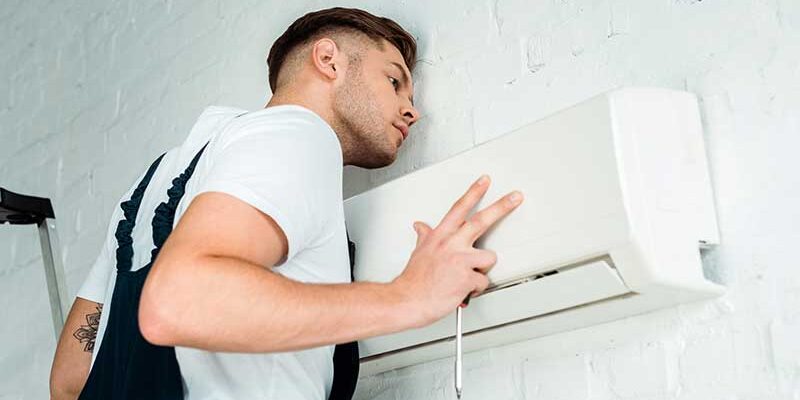Most people consider the brand, chilling capacity, and energy efficiency rating when purchasing and installing an air conditioner. However, one crucial aspect that is frequently overlooked is the optimal installation distance for air conditioners. This distance has a significant impact on the efficacy and effectiveness of your cooling system. In this article, we will discuss the significance of installing your air conditioner at the optimal distance, as well as provide tips for attaining the best results.
Distance for Air Conditioner Installation: A Primer
Installation distance for an air conditioner refers to the area around the unit that must be free of obstructions. This space is necessary for proper airflow, heat dissipation, and overall chilling effectiveness. When an AC unit is installed too near to walls, furniture, or other objects, it can result in reduced cooling performance and increased energy consumption.
Consider the following factors to determine the optimal installation distance:
- Manufacturer’s Suggested Use: Consult the manufacturer’s specifications before determining the proper installation distance. Different AC models may have varying specifications, so it is essential to adhere to them precisely.
- Airflow is essential for the efficient operation of the air conditioner. Ensure that there are no obstructions in front of or near the air intake and exhaust vents. Airflow ensures that the device can effectively draw in warm air and expel cooled air.
- Dissipation of Heat: Air conditioners produce heat while chilling indoor air. To dissipate this heat, ample space should surround the unit. When an air conditioner is surrounded by walls or other objects, it struggles to dissipate heat, resulting in decreased efficacy.
- Accessibility for Maintenance You should also consider maintenance and repair accessibility. Installing an air conditioner in a confined space can make it difficult for technicians to service the unit when necessary.
Instructions for an Optimal Installation
- Before installing your air conditioner, measure the unit and attentively read the manufacturer’s instructions. Utilize these dimensions to plan the installation location, ensuring that clearance requirements are met.
- Empty the Area: Remove all obstacles, furnishings, and clutter from the area of installation. Ensure that there are no drapes, plants, or other objects impeding circulation around the air conditioning unit.
- Maintain Adequate Clearance: Air conditioners typically require a minimum of 12 to 18 inches of clearance on all sides. However, this can differ, so refer to your AC unit’s manual for precise measurements.
- Consider Outdoor Units: If you have a split-system air conditioner, you should also consider the outdoor unit. Ensure that it has adequate distance from walls and vegetation for appropriate ventilation.
- Consult a Professional HVAC Technician for Installation: For complex installations or if you’re uncertain of the optimal distance, it’s best to consult an HVAC professional. They have the knowledge necessary to ensure that your air conditioner is installed properly for maximum efficiency.
The conclusion
Installation distance is crucial for maintaining cooling efficiency, extending the life of your air conditioner, and saving money on energy costs. By adhering to the manufacturer’s guidelines and these practical tactics, you can ensure that your air conditioner functions optimally, keeping your indoor space comfortably cool during the hottest months. This crucial aspect of air conditioning installation can have a significant impact on your overall comfort and energy costs.




